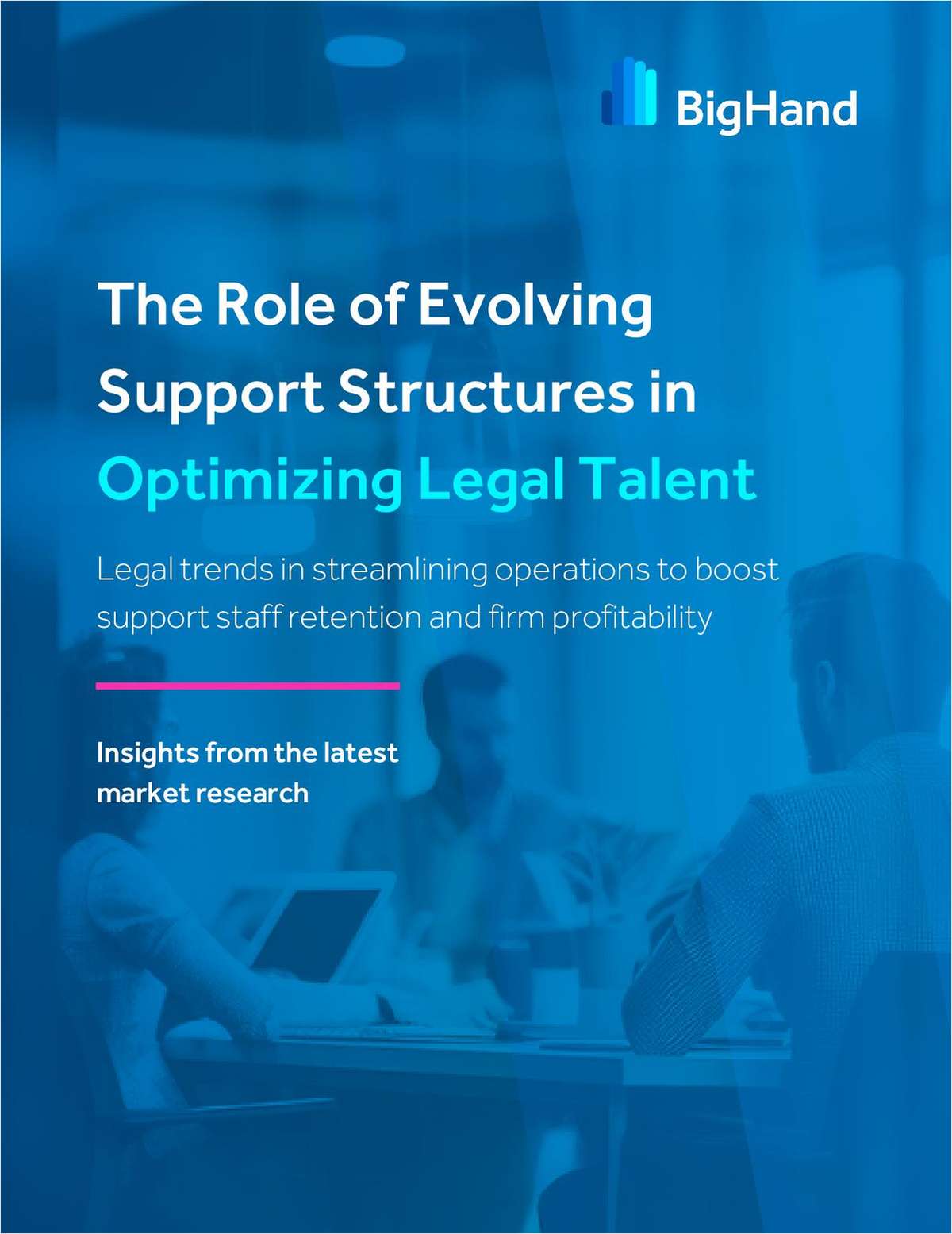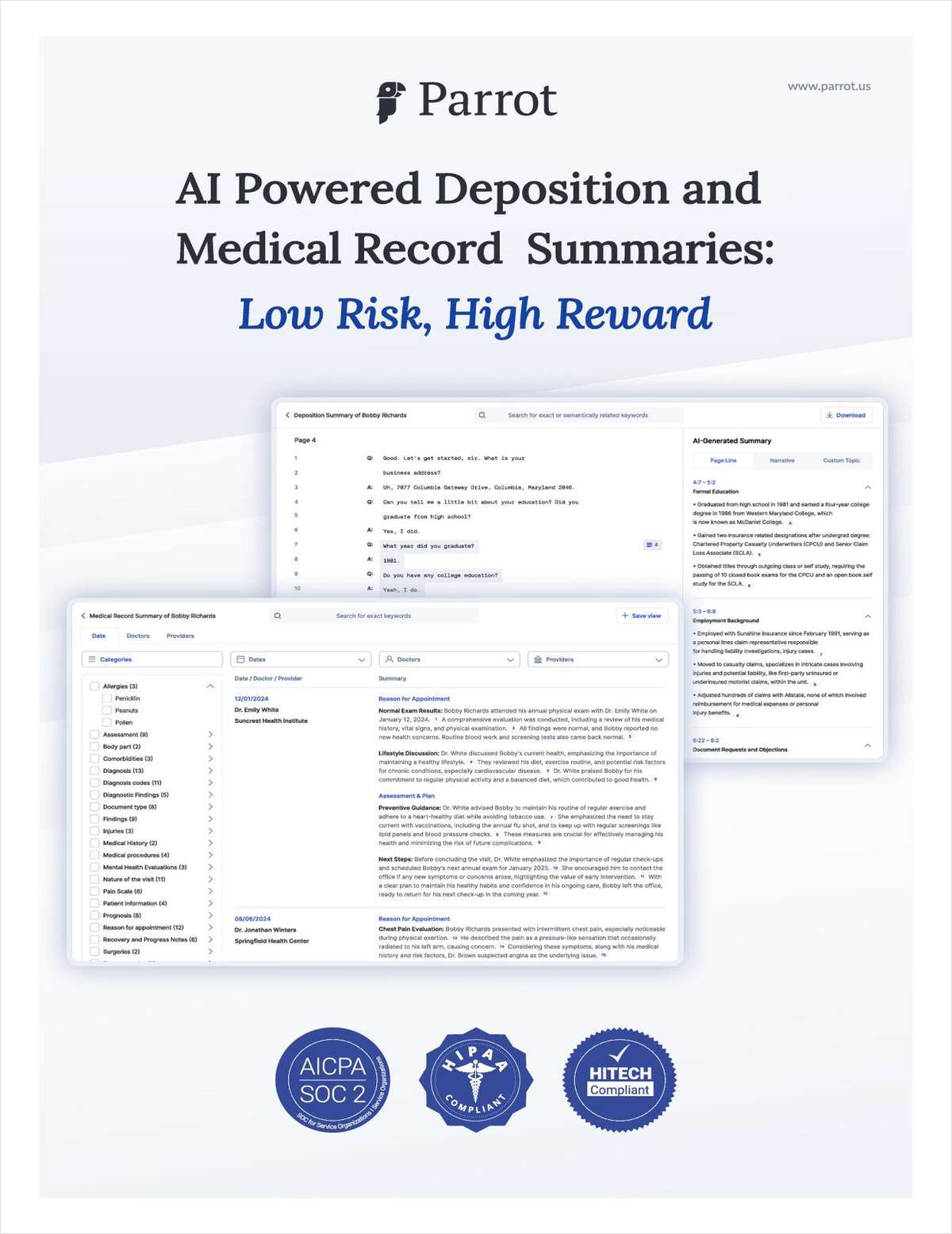The Year's Most Interesting Litigation
Changing technology sparked a range of memorable lawsuits—but so did some timeless (and thorny) legal issues.
December 30, 2014 at 10:57 AM
15 minute read
What were the most fascinating big business cases of 2014? We chose eight that grabbed our attention. Many involved new technologies. Advances in science, engineering and design have altered nearly every aspect of our lives, sometimes with stunning speed. But the law moves slowly. Courts are asked to apply legal principles that are decades, if not centuries, old to fact patterns that never existed when these laws arose. Does a radical model for delivering broadcast television violate copyright law? Can computer software be patented? What should sophisticated investors be told about newfangled financial instruments devised by Wall Street?
At the same time, most big, important cases revisit age-old legal issues. How do you prove fraud, and what should be done about it? When does an investor have an unfair trading advantage? How much should the government police the financial markets? And who is at fault when devastating industrial accidents happen? These cases didn't settle all of these questions. In some instances,they may have raised more issues than they answered. But that's how the law works: It evolves, sometimes in fits and starts.
As usual, the lawyering in each case interested us as much as the underlying facts. Randy Mastro of Gibson, Dunn & Crutcher took a flash-and-spitfire approach to the Chevron-Ecuador dispute with great results. On the other end of the spectrum, appellate advocate Paul Clement of Bancroft couldn't be more low-key, or more effective, for television broadcasters in their campaign to defeat a disruptive new entrant called Aereo. David Boies, a perennial player in high-stakes litigation, showed up in an unlikely case last year, winning a crucial ruling for investors. But sometimes even armies of top legal talent can't secure a win, as BP has learned in the Deepwater Horizon litigation.
This content has been archived. It is available through our partners, LexisNexis® and Bloomberg Law.
To view this content, please continue to their sites.
Not a Lexis Subscriber?
Subscribe Now
Not a Bloomberg Law Subscriber?
Subscribe Now
NOT FOR REPRINT
© 2025 ALM Global, LLC, All Rights Reserved. Request academic re-use from www.copyright.com. All other uses, submit a request to [email protected]. For more information visit Asset & Logo Licensing.
You Might Like
View AllTrending Stories
- 1Legal Community Mourns the Loss of Trailblazing Judge Dorothy Chin Brandt
- 2Delaware Supreme Court, Reversing Chancery, Lowers Review Standard for TripAdvisor Move to Nevada
- 3Haynes and Boone Expands in New York With 7-Lawyer Seward & Kissel Fund Finance, Securitization Team
- 4Upstart Insurer That's Wowing Industry Hires AIG Legal Exec to Help Guide Global Expansion
- 5Connecticut Lawyers in Spotlight for Repping FBI Agents
Who Got The Work
J. Brugh Lower of Gibbons has entered an appearance for industrial equipment supplier Devco Corporation in a pending trademark infringement lawsuit. The suit, accusing the defendant of selling knock-off Graco products, was filed Dec. 18 in New Jersey District Court by Rivkin Radler on behalf of Graco Inc. and Graco Minnesota. The case, assigned to U.S. District Judge Zahid N. Quraishi, is 3:24-cv-11294, Graco Inc. et al v. Devco Corporation.
Who Got The Work
Rebecca Maller-Stein and Kent A. Yalowitz of Arnold & Porter Kaye Scholer have entered their appearances for Hanaco Venture Capital and its executives, Lior Prosor and David Frankel, in a pending securities lawsuit. The action, filed on Dec. 24 in New York Southern District Court by Zell, Aron & Co. on behalf of Goldeneye Advisors, accuses the defendants of negligently and fraudulently managing the plaintiff's $1 million investment. The case, assigned to U.S. District Judge Vernon S. Broderick, is 1:24-cv-09918, Goldeneye Advisors, LLC v. Hanaco Venture Capital, Ltd. et al.
Who Got The Work
Attorneys from A&O Shearman has stepped in as defense counsel for Toronto-Dominion Bank and other defendants in a pending securities class action. The suit, filed Dec. 11 in New York Southern District Court by Bleichmar Fonti & Auld, accuses the defendants of concealing the bank's 'pervasive' deficiencies in regards to its compliance with the Bank Secrecy Act and the quality of its anti-money laundering controls. The case, assigned to U.S. District Judge Arun Subramanian, is 1:24-cv-09445, Gonzalez v. The Toronto-Dominion Bank et al.
Who Got The Work
Crown Castle International, a Pennsylvania company providing shared communications infrastructure, has turned to Luke D. Wolf of Gordon Rees Scully Mansukhani to fend off a pending breach-of-contract lawsuit. The court action, filed Nov. 25 in Michigan Eastern District Court by Hooper Hathaway PC on behalf of The Town Residences LLC, accuses Crown Castle of failing to transfer approximately $30,000 in utility payments from T-Mobile in breach of a roof-top lease and assignment agreement. The case, assigned to U.S. District Judge Susan K. Declercq, is 2:24-cv-13131, The Town Residences LLC v. T-Mobile US, Inc. et al.
Who Got The Work
Wilfred P. Coronato and Daniel M. Schwartz of McCarter & English have stepped in as defense counsel to Electrolux Home Products Inc. in a pending product liability lawsuit. The court action, filed Nov. 26 in New York Eastern District Court by Poulos Lopiccolo PC and Nagel Rice LLP on behalf of David Stern, alleges that the defendant's refrigerators’ drawers and shelving repeatedly break and fall apart within months after purchase. The case, assigned to U.S. District Judge Joan M. Azrack, is 2:24-cv-08204, Stern v. Electrolux Home Products, Inc.
Featured Firms
Law Offices of Gary Martin Hays & Associates, P.C.
(470) 294-1674
Law Offices of Mark E. Salomone
(857) 444-6468
Smith & Hassler
(713) 739-1250










